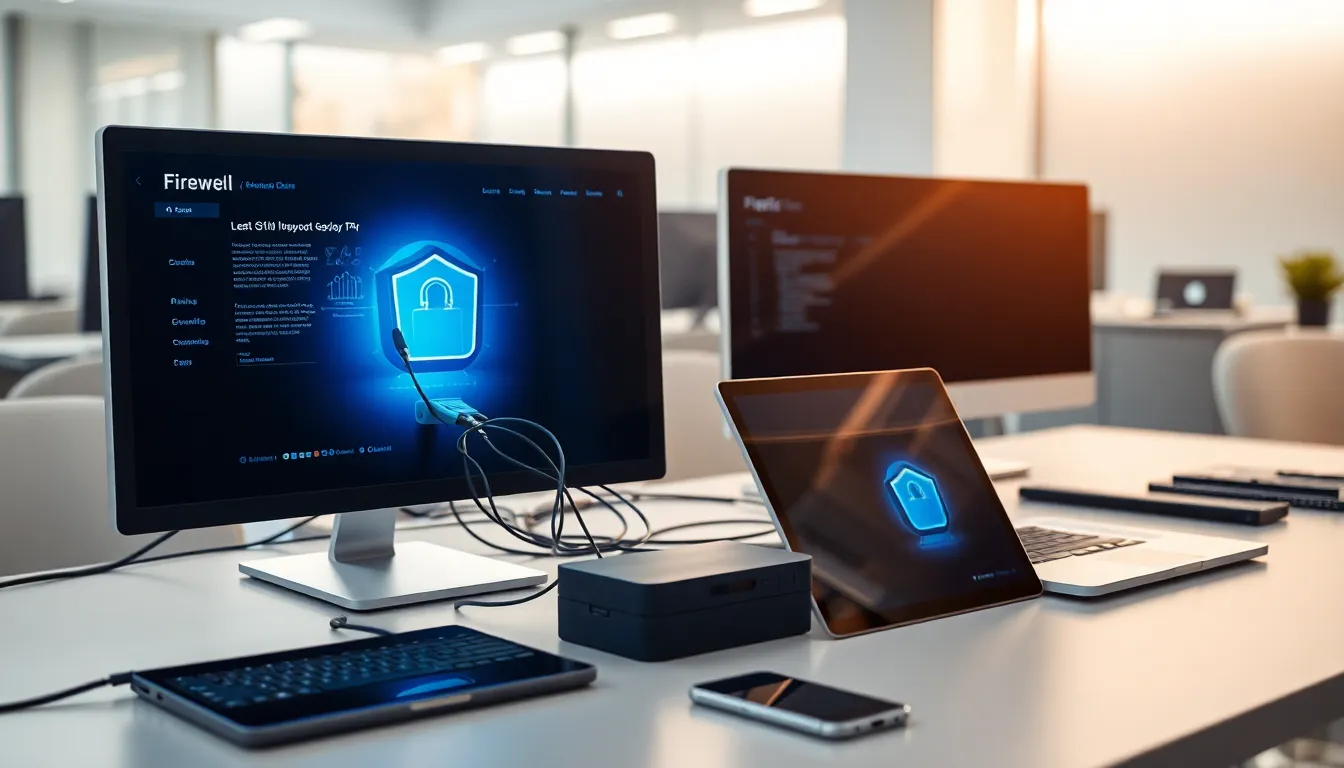Table of Contents
ToggleIn a world where cyber threats lurk around every digital corner, understanding technical security is more crucial than ever. Think of it as the digital equivalent of locking your doors and installing a security system—except this time, the bad guys are armed with keyboards instead of crowbars.
Overview of Technical Security
Technical security involves the use of hardware and software solutions to safeguard networks and data. Cybersecurity measures help protect systems from unauthorized access, theft, and damage. These measures often include firewalls, encryption, intrusion detection systems, and endpoint protection.
Firewalls act as a barrier between trusted internal networks and untrusted external networks. They monitor and filter incoming and outgoing traffic based on predetermined security rules. Encryption secures sensitive data by converting it into code, making it inaccessible without the proper decryption key.
Intrusion detection systems (IDS) monitor network traffic for suspicious activities. These systems detect potential security breaches and alert administrators to take action. Endpoint protection refers to security solutions installed on devices like computers and mobile phones, safeguarding them against threats.
Regular updates to software and systems enhance security. Patching vulnerabilities as they are discovered reduces the risk of exploitation by attackers. Continuous monitoring of network activity and user behavior helps identify potential threats early on.
The implementation of multi-factor authentication (MFA) provides an extra layer of security. MFA requires users to provide two or more verification factors to gain access, significantly reducing the likelihood of unauthorized access. Security awareness training for employees educates them on recognizing phishing attempts and other cyber threats.
Incorporating strong password policies enhances security. Encouraging users to create complex passwords and change them regularly minimizes the chances of successful attacks. Overall, technical security plays a vital role in protecting individuals and organizations from evolving cyber threats.
Types of Technical Security Examples

Various types of technical security examples exist to help protect against cyber threats. These measures encompass different areas, ensuring that organizations and individuals implement comprehensive security strategies.
Network Security
Network security involves protecting the integrity and usability of networks. Firewalls act as barriers between trusted internal networks and untrusted external ones. Intrusion detection systems monitor network traffic for suspicious activities or policy violations. Virtual Private Networks (VPNs) encrypt data, providing secure remote access to networks. Segmentation creates separate network zones, minimizing exposure to threats. Parental control features help regulate web access for sensitive environments.
Application Security
Application security focuses on safeguarding software applications throughout their lifecycle. Secure coding practices minimize vulnerabilities during development. Regular security testing, including penetration testing and code reviews, ensures the software remains secure. Web Application Firewalls (WAFs) can filter out harmful traffic before it reaches the application. Updating applications regularly prevents exploitation of known vulnerabilities. User authentication methods, such as multi-factor authentication, strengthen security.
Endpoint Security
Endpoint security refers to protecting devices like smartphones, laptops, and desktops from threats. Antivirus software scans devices for malware and removes it. Endpoint detection and response (EDR) solutions monitor devices for suspicious behavior to provide real-time threat detection. Device encryption secures sensitive data, preventing unauthorized access. Security patches are critical, as they close vulnerabilities that attackers might exploit. Centralized management solutions help streamline the monitoring and protecting of multiple devices.
Real-World Technical Security Examples
Understanding practical applications of technical security helps illustrate its importance. Real-world examples provide insight into effective strategies for protecting digital assets.
Case Study: Incident Response
A well-known global retailer experienced a data breach that compromised customer credit card information. The company quickly activated its incident response plan, involving teams from IT, legal, and public relations. Containment efforts included isolating affected systems and securing network vulnerabilities. Communications with affected customers occurred promptly, addressing concerns and providing credit monitoring solutions. Analysis of the incident revealed weaknesses in network security protocols. As a result, the company implemented advanced intrusion detection systems and enhanced employee security training, significantly improving its response capabilities for future incidents.
Case Study: Security Breaches
An example involving a major social media platform illustrates the consequences of security breaches. Hackers exploited vulnerabilities in the platform’s API, leading to unauthorized access to millions of user accounts. A thorough investigation determined the breach resulted from inadequate security testing and failure to apply timely software updates. Following the incident, the platform reinforced its security measures by adopting robust encryption methods and establishing a routine for security audits. User education on enabling multi-factor authentication became a priority as part of a broader effort to improve overall security posture and restore user trust.
Best Practices for Implementing Technical Security
Effective technical security requires several best practices for optimal results. Regular software updates play a crucial role in patching vulnerabilities. Organizations must implement multi-factor authentication, which significantly reduces unauthorized access risks. Strong password policies protect sensitive information from cyber intruders.
Monitoring network activity continuously enhances detection capabilities for suspicious behavior. Security awareness training empowers employees to recognize potential threats and respond appropriately. Conducting regular security assessments identifies weaknesses in existing measures.
Firewalls act as a barrier against untrusted networks, blocking malicious traffic. Intrusion detection systems offer real-time alerts on anomalous activities. Utilizing Virtual Private Networks enhances remote user security.
Employing encryption protects sensitive data, ensuring that even if intercepted, the information remains unreadable. Endpoint protection, including antivirus software and endpoint detection solutions, defends against malware on all devices. Secure coding practices safeguard applications from exploitation by cybercriminals.
Incorporating incident response plans prepares organizations for potential breaches. These plans should outline clear steps for containment, investigation, and recovery. Continuous evaluation of security measures promotes adaptability to evolving threats.
Fostering a culture of security awareness strengthens organizational resilience. Engaging employees through regular training sessions emphasizes the importance of protecting digital assets. Accountability at all organizational levels supports a robust security posture.
Statistics show that data breaches heavily impact businesses, emphasizing proactive security measures. Adopting these best practices cultivates an environment where technical security thrives and minimizes risks.
Technical security is crucial in a world where cyber threats are ever-evolving. Organizations must prioritize robust security measures to protect their data and networks from potential breaches. By implementing solutions like firewalls, encryption, and regular software updates, they can significantly reduce vulnerabilities.
Moreover, fostering a culture of security awareness among employees enhances overall resilience. Continuous monitoring and incident response planning prepare organizations for unexpected challenges. As cybercriminals become more sophisticated, the commitment to strong technical security practices will determine the success of safeguarding digital assets. Investing in these strategies is not just beneficial; it’s essential for long-term security and peace of mind.




